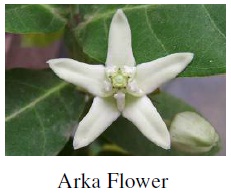1. During puja one should never turn one’s back on the sacred fire, or an icon, or a guru.
2. The chest or at least the right shoulder should always be exposed when in proximity to the sacred fire, an icon or guru. Obviously in cold climates this is not practical.
3. Never salute or prostrate to the deity with the upper body covered (males).
4. The oleander flower must not be offered to the Lord Viṣṇu. The reason is that the flower is poisonous and in the worship of Viṣṇu the prasāda is sacred water thus the water could become contaminated. In the worship of Siva the prasada is sacred ash (vibhūti) and this cannot be contaminated.
5. One should not break tulasi without having bathed. Some gurus suggest that only flowers should be offered repeating the name "tulasi".
6. A votary lamp should not be extinguished or used for any other purpose.
7. A lamp should never be lit from another lamp.
 8. Barley is also called “akṣata”. On the Salagrāma barley should never be offered. Tulasi is never offered to Ganeśa and dūrva (lawn grass) is never offered to Devi. The bilva leaves are never to be offered to the Sun and one must never offer the arka flower to Lord Vishnu.
8. Barley is also called “akṣata”. On the Salagrāma barley should never be offered. Tulasi is never offered to Ganeśa and dūrva (lawn grass) is never offered to Devi. The bilva leaves are never to be offered to the Sun and one must never offer the arka flower to Lord Vishnu.
9. Flowers kept in the hand and sandal paste kept in a copper vessel become impure.
10. After bathing in preparation for pūjā one should never dry oneself with the garment that was previously worn, otherwise another bath is recommended.
11. In images the most important thing is bathing and decorating, in maṇḍalas the most important thing is the invoking locating of the various divinities in their respective places, with the specific mantras, and in fire; the oblations soaked in ghee are the most important.
12. A thing once offered cannot be offered to another deity, even a lamp, this is the general rule. But the exception is in the case of ‘parivāra devatas’; e.g. the food offering to the Lord Vishnu is also offered to Lakshmi, Bhudevi, and all the entourage of the Lord. Lord Shiva’s naivedyam can be offered to all of His family as well.
13. Acamanam must always be done after the following acts; sneezing, sleeping, eating, drinking, bathing, spitting, dressing, relieving oneself or walking on a high road. The substitute form of ācamanam is touching the mouth with the right hand and then touching the right ear, this is repeated three times. [Ganga resides within the right ear.]
14. Before all religious rites tilak must be applied; if the clay or sandal paste is not available then simply apply water.
15. During puja, homa etc a pavitri — a ring of kuş́a grass must be worn on the ring finger of the right hand, if this is not available then a gold, silver or copper ring can be used instead.
16. At every ceremony, and the termination of study, gratuity — guerdon [dakṣina] must be offered to the guru or the officiating priest, otherwise all the merit accruing from the ceremony goes to the priest and not to the host (yajamana).
17. To a priest who performs the homa, a pair of garments; dhoti and aṅga-vastra should be given in addition to the sacrificial fee.
18. Flowers are offered with the ring and middle finger of the right hand, avoiding touching then with the thumb.
19. Flowers are always offered with the palm turned upwards [over-hand], rice grains etc with the palm downwards.
20. All offerings are made with both hands; i.e. with the right hand and the left hand touching the right forearm or elbow, except when ringing the bell which is done with the left hand.
21. The bell should always be rung when offering bath, incense, lamp, food, and decorations as well as during the nirājana rite.
22. One must never smell the food, incense and flowers intended for the Deity.
23. One must always stand or sit to the right of the Deity during worship. In a temple the men should stand to the right of the Deity and the women to the left.
24. When leaving the shrine one must not turn the back to the icon, one should leave walking backwards.